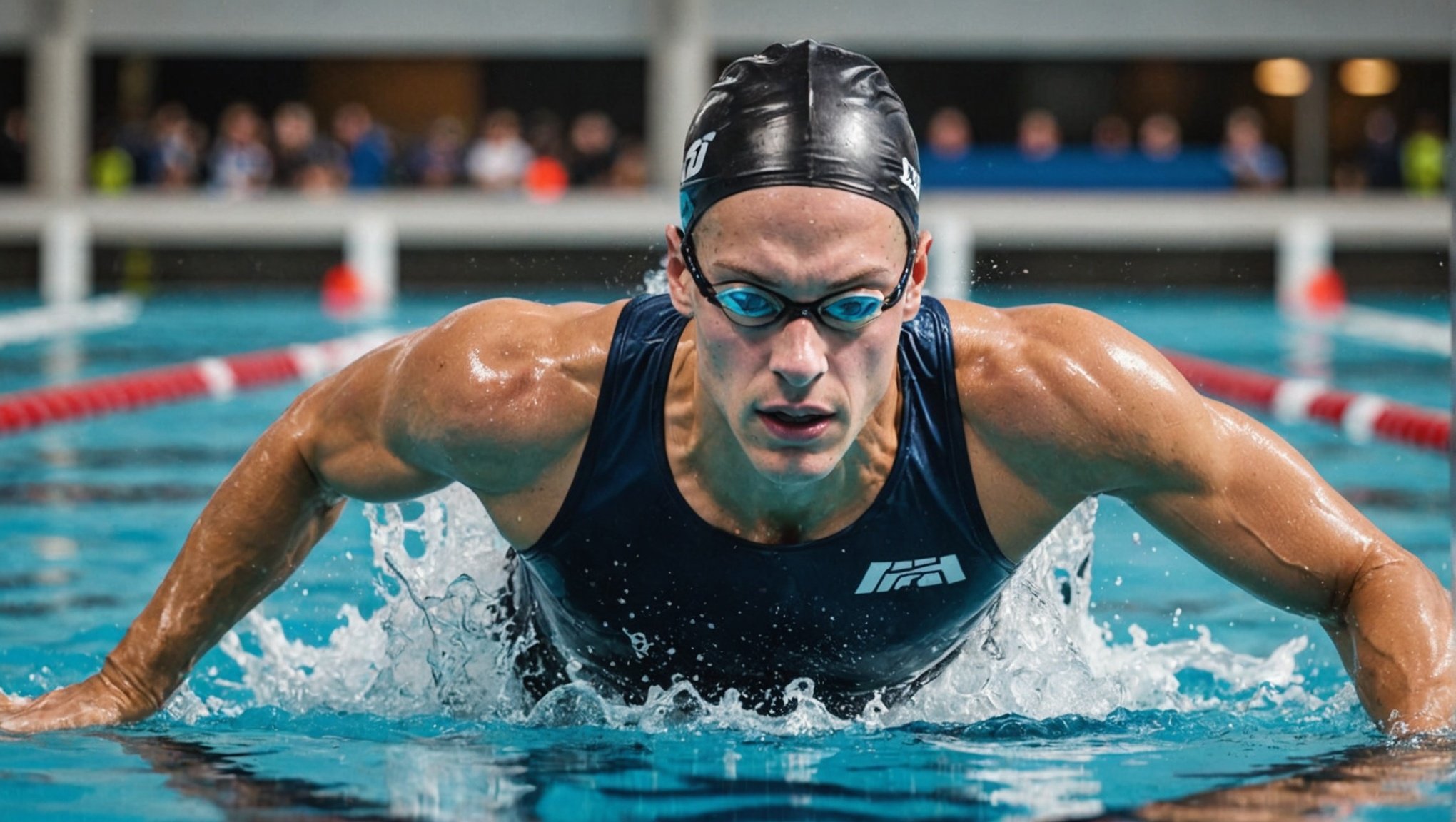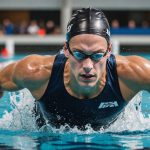Understanding the Importance of Breathing Techniques in Swimming
Effective breathing techniques are crucial for optimal swimming performance. These techniques not only enhance swimming efficiency but also significantly impact the overall stroke technique and speed.
In swimming, breath control helps maintain proper body alignment, which is essential for minimizing drag. When a swimmer breathes rhythmically, they can effortlessly integrate breathing into their stroke without disrupting their momentum. This seamless integration contributes to an effective stroke, allowing for smooth and controlled swimming.
This might interest you : Boost Your Endurance and Strength: Essential Tips for Mountain Bikers Tackling Tough Terrains
Moreover, adequate breathing techniques also influence a swimmer’s ability to reduce drag. By minimizing head movement and maintaining streamlined body positions, the swimmer encounters less water resistance. This efficient positioning is key to increasing speed and conserving energy over long distances. It’s much like the principle of aerodynamics — reducing resistance leads to faster and more efficient movement.
Understanding how breathing impacts stroke technique and speed is vital. Swimmers who master the art of controlled breathing can establish a consistent rhythm, avoid unnecessary strokes, and utilize their full lung capacity. This results in much-improved performance, enabling swimmers to tackle challenges with confidence. Overall, improving one’s breathing technique is a vital skill for anyone looking to maximize their swimming potential.
Also to see : Mastering Marathon Pacing: Effective Strategies for Energy Management on Race Day
Analysis of Common Breathing Mistakes
Breathing is a fundamental aspect of swimming, yet many encounter common errors that impact their overall performance. Identifying these frequent breathing mistakes can significantly improve swimming technique and efficiency.
A prevalent mistake is holding one’s breath too long within each stroke cycle. This creates unnecessary tension and disrupts the natural rhythm of swimming, ultimately affecting the speed and causing increased drag. Swimmers often neglect proper exhalation, leading to a buildup of carbon dioxide, which can cause fatigue and slower lap times.
Another common error is unilateral breathing, frequently focusing on one side only. This can lead to muscular imbalances and lack of symmetry in stroke, which can inadvertently cause more drag. Most swimmers focus on forward propulsion and often ignore rotational balance, which can misalign the body position and further amplify drag.
To correct these breathing mistakes, swimmers should practice rhythmic breathing techniques, such as bilateral breathing, which promotes balance and ensures even muscle development. Engaging in drills that emphasize exhalation underwater can help maintain a consistent pace and reduce physiological stress. Understanding the significance of breath control and integrating these adjustments can lead to enhanced swimming performance and more efficient execution of strokes.
Effective Breathing Techniques
Mastering effective techniques for breathing can significantly impact your swimming performance. It enhances breath control, allowing you to increase your swimming speed. Below, we dive into various methods that can improve your aquatic prowess.
Diaphragmatic Breathing
Engaging in diaphragmatic breathing is critical for swimmers as it promotes optimal oxygen intake. This method involves breathing deeply into the diaphragm rather than shallowly into the chest, allowing you to utilise your lung capacity fully. The more air you capture, the better you can sustain your energy levels and improve endurance.
Bilateral Breathing
Incorporating bilateral breathing helps swimmers achieve stroke balance and rhythm. By breathing on both sides, you ensure a symmetrical swimming posture, reducing the risk of muscle imbalance. Moreover, it offers a tactical advantage in open water swimming, as it allows you to see varying conditions on both sides.
Breath Timing
Timing your breath with strokes is critical to maximise efficiency in the water. The precision in breath timing ensures that you do not break your stroke rhythm, maintaining your momentum and speed. Typically, competitive swimmers aim to take breaths at the most hydrodynamically sound moments of their stroke cycle, enhancing performance over longer distances.
Step-by-Step Guide to Practicing Breathing Techniques
Practicing effective breathing techniques in swimming is vital for enhancing performance and endurance. Here’s a step-by-step guide on how to integrate these practices into your swim drills.
Start by selecting swim drills that focus on breath control. One highly recommended practice is bilateral breathing, which encourages breathing on both sides. This not only helps balance your stroke but also aids in optimizing oxygen intake. It’s crucial to allocate specific time during practice sessions to focus solely on these techniques.
Structure your practice sessions by incorporating intervals. Begin with short sprints where you breathe every four strokes, then gradually increase the distance, making sure to maintain a consistent breathing pattern. This builds your lung capacity over time and enhances breath efficiency.
Introduce dedicated breath practices, such as bubble drills, into your routine. In this exercise, immerse your body in the water and blow bubbles continuously. This helps you get accustomed to exhaling underwater and managing breath intensity.
Finally, make these exercises a regular part of your training routines to develop familiarity and confidence in breath control. With practice techniques consistently applied, your proficiency in managing breath during swim sessions will significantly improve.
Visual Aids and Resources for Improving Breathing Techniques
Visual tools, such as diagrams, play a vital role in comprehending body positioning during swimming. By illustrating the optimal alignment of the head, torso, and limbs, diagrams help swimmers maintain correct posture, especially when breathing. This visualisation aids in minimising drag and enhancing efficiency in the water.
Moreover, instructional videos provide dynamic, interactive guidance on breathing techniques. They allow swimmers to observe professional demonstrations, highlighting proper timing and coordination. These videos often break down complex movements into manageable segments, making it easier for both beginners and experienced swimmers to grasp the nuances of effective breathing.
Coaching resources are invaluable for those training competitive swimmers. Coaches can access specialised materials, such as detailed articles, workshops, and seminars, which offer insights into advanced breathing strategies. These resources also provide updates on the latest techniques and tools, ensuring that coaches remain at the forefront of swimming instruction.
For swimmers and coaches alike, integrating visual aids and multimedia resources into training routines significantly enhances the understanding and execution of breathing techniques. As such, leveraging these tools not only boosts performance but also builds confidence in one’s swimming abilities.
Real-Life Examples of Swimmers Utilizing Effective Breathing
Exploring real-life success stories of swimmers who have mastered technique application offers valuable insights. Elite swimmers often provide compelling case studies for performance improvement. These athletes not only hone their skills in the pool, but their unique breathing techniques help propel them to the upper echelons of competitive swimming.
For instance, Olympic swimmers employ meticulous breathing strategies to minimize drag during races. The legendary Michael Phelps, for instance, demonstrated an efficient breathing technique by keeping his chin high and maintaining a low head position, thereby reducing resistance and enhancing performance analysis results.
Another aspect of breathing technique in competitive swimming is the timing and frequency. The lessons learned from the likes of Katie Ledecky illustrate the importance of balancing oxygen intake without compromising speed. She often breathes every two strokes, optimizing her energy reserves while maintaining quick lap times.
Moreover, these swimmers have integrated bilateral breathing into their training regimes. Bilateral breathing allows them to adapt to varying race conditions and maintain better body alignment. Observing such competitive performances provides both seasoned swimmers and novices with a model for refining their own breathing techniques to enhance success stories in swimming.











